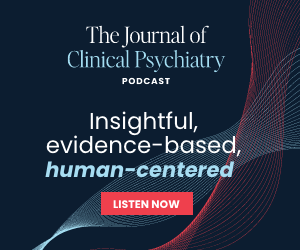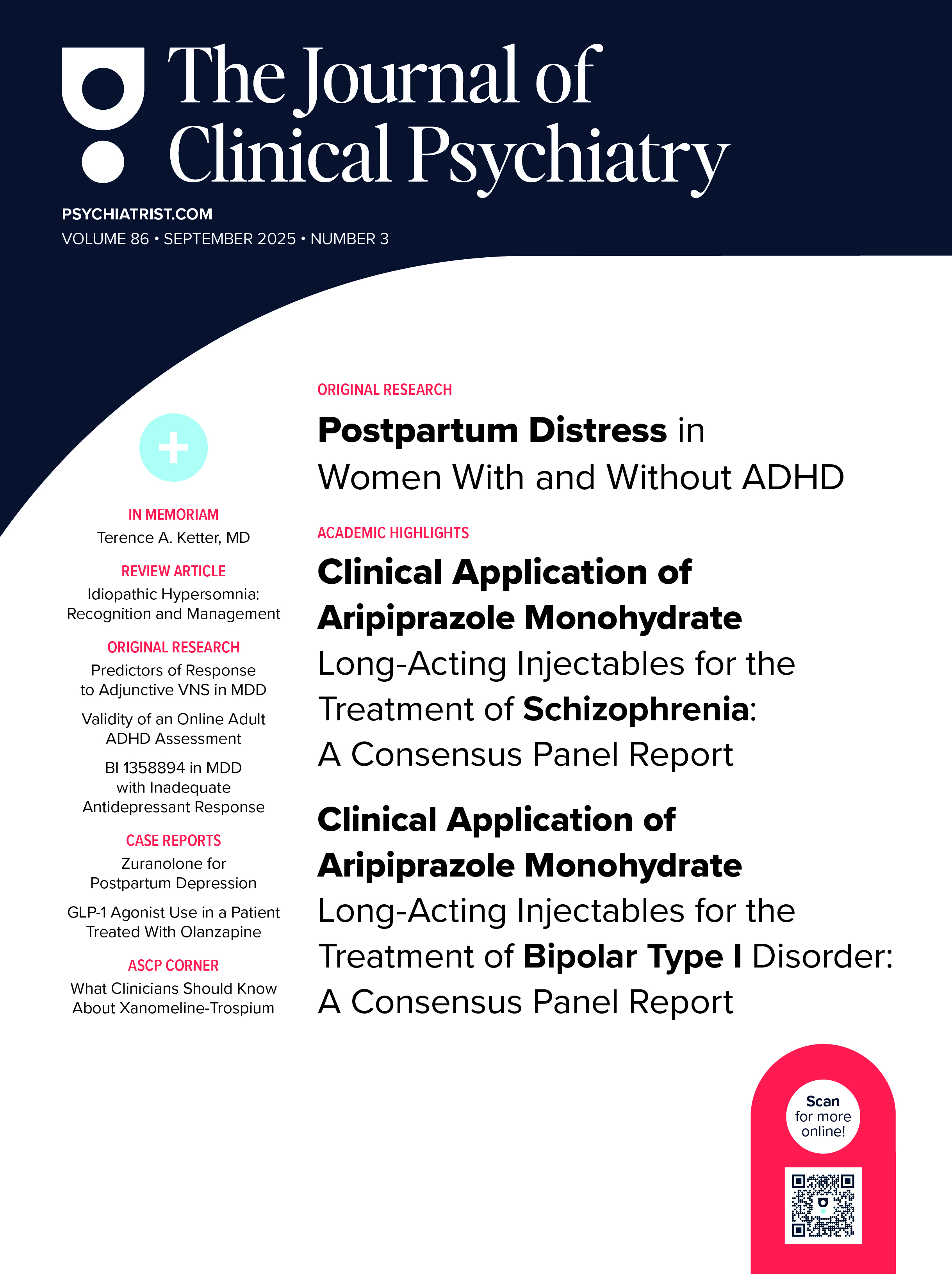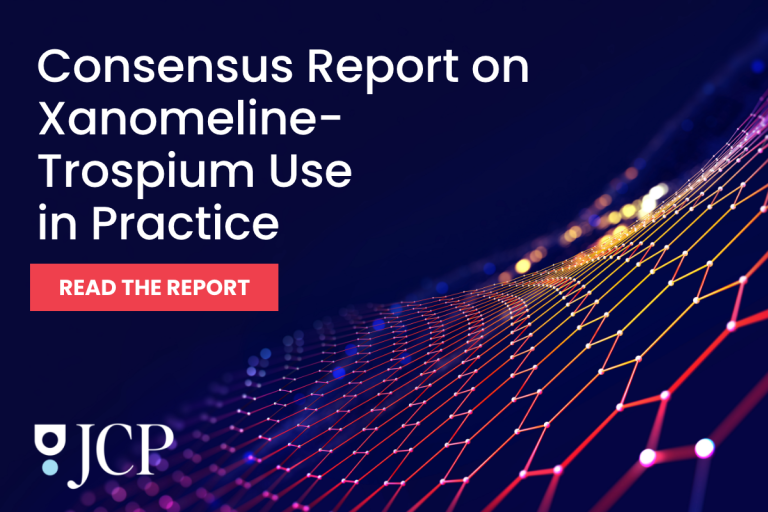
ABSTRACT
Objective: Ketamine is a novel and rapidly acting treatment for major depressive disorder (MDD). Benzodiazepines are commonly coprescribed with antidepressants in MDD. This study sought to examine data from a randomized clinical trial that compared a single infusion of intravenous (IV) ketamine to midazolam placebo in treatment-resistant depression (DSM-IV-TR MDD) and to assess whether the use of concomitant oral benzodiazepines differentially affected treatment response to ketamine versus midazolam.
Methods: This trial ran from December 2015 to December 2016. Subjects who were taking oral benzodiazepines (n = 44) were compared to those who were not (n = 55). A significant treatment-by-benzodiazepine effect could be interpreted as a possible moderator of differential treatment response to ketamine versus midazolam. Benzodiazepine use was examined as both a binary and a continuous predictor, to assess the impact of dosage.
Results: Benzodiazepine users did not differ from non-users on the original study’s primary outcome measure, score on the 6-item Hamilton Depression Rating Scale (HDRS-6), at baseline, but the former had more severe anxiety. When oral benzodiazepine use was modeled as a binary predictor, benzodiazepine use did not impact differential treatment response. However, when benzodiazepine dosage was considered, there was a significant impact of benzodiazepine use on differential treatment response. Oral benzodiazepines significantly impacted HDRS-6 (P = .018) and Clinical Global Impressions–Severity of Illness scale (CGI-S; P = .008) scores at day 1 (24 hours post treatment); effects were nonsignificant for all day 3 outcomes. Among ketamine subjects, higher doses of benzodiazepines were associated with less improvement in depression scores at day 1.
Conclusions: Concomitant oral benzodiazepines at higher doses may attenuate the antidepressant effects of IV ketamine at day 1 but not day 3 post-infusion.
Trial Registration: ClinicalTrials.gov identifier: NCT01920555.
Members Only Content
This full article is available exclusively to Professional tier members. Subscribe now to unlock the HTML version and gain unlimited access to our entire library plus all PDFs. If you’re already a subscriber, please log in below to continue reading.
References (28)

- Wilkinson ST, Sanacora G. Considerations on the off-label use of ketamine as a treatment for mood disorders. JAMA. 2017;318(9):793–794. PubMed CrossRef
- Wilkinson ST, Toprak M, Turner MS, et al. A survey of the clinical, off-label use of ketamine as a treatment for psychiatric disorders. Am J Psychiatry. 2017;174(7):695–696. PubMed CrossRef
- Skånland SS, Cieślar-Pobuda A. Off-label uses of drugs for depression. Eur J Pharmacol. 2019;865:172732. PubMed CrossRef
- Cosci F, Fava GA. When anxiety and depression coexist: the role of differential diagnosis using clinimetric criteria. Psychother Psychosom. 2021;90(5):308–317. PubMed CrossRef
- Smith WT, Londborg PD, Glaudin V, et al. Short-term augmentation of fluoxetine with clonazepam in the treatment of depression: a double-blind study. Am J Psychiatry. 1998;155(10):1339–1345. PubMed CrossRef
- Papakostas GI, Clain A, Ameral VE, et al. Fluoxetine-clonazepam cotherapy for anxious depression: an exploratory, post-hoc analysis of a randomized, double blind study. Int Clin Psychopharmacol. 2010;25(1):17–21. PubMed CrossRef
- Bushnell GA, Stürmer T, Gaynes BN, et al. Simultaneous antidepressant and benzodiazepine new use and subsequent long-term benzodiazepine use in adults with depression, United States, 2001–2014. JAMA Psychiatry. 2017;74(7):747–755. PubMed CrossRef
- Diekamp B, Borentain S, Fu DJ, et al. Effect of concomitant benzodiazepine use on efficacy and safety of esketamine nasal spray in patients with major depressive disorder and acute suicidal ideation or behavior: pooled randomized, controlled trials. Neuropsychiatr Dis Treat. 2021;17:2347–2357. PubMed CrossRef
- Shiroma PR, Thuras P, Wels J, et al. A randomized, double-blind, active placebo-controlled study of efficacy, safety, and durability of repeated vs single subanesthetic ketamine for treatment-resistant depression. Transl Psychiatry. 2020;10(1):206. PubMed CrossRef
- Albott CS, Shiroma PR, Cullen KR, et al. The antidepressant effect of repeat dose intravenous ketamine is delayed by concurrent benzodiazepine use. J Clin Psychiatry. 2017;78(3):e308–e309. PubMed CrossRef
- Andrashko V, Novak T, Brunovsky M, et al. The antidepressant effect of ketamine is dampened by concomitant benzodiazepine medication. Front Psychiatry. 2020;11:844. PubMed CrossRef
- Frye MA, Blier P, Tye SJ. Concomitant benzodiazepine use attenuates ketamine response: implications for large scale study design and clinical development. J Clin Psychopharmacol. 2015;35(3):334–336. PubMed CrossRef
- Ford N, Ludbrook G, Galletly C. Benzodiazepines may reduce the effectiveness of ketamine in the treatment of depression. Aust N Z J Psychiatry. 2015;49(12):1227. PubMed CrossRef
- Fava M, Freeman MP, Flynn M, et al. Double-blind, placebo-controlled, dose-ranging trial of intravenous ketamine as adjunctive therapy in treatment-resistant depression (TRD). Mol Psychiatry. 2020;25(7):1592–1603. PubMed CrossRef
- Salloum NC, Fava M, Freeman MP, et al. Efficacy of intravenous ketamine treatment in anxious versus nonanxious unipolar treatment-resistant depression. Depress Anxiety. 2019;36(3):235–243. PubMed CrossRef
- Ionescu DF, Luckenbaugh DA, Niciu MJ, et al. Effect of baseline anxious depression on initial and sustained antidepressant response to ketamine. J Clin Psychiatry. 2014;75(9):e932–e938. PubMed CrossRef
- Castellano D, Shepard RD, Lu W. Looking for novelty in an “old” receptor: recent advances toward our understanding of GABAARs and their implications in receptor pharmacology. Front Neurosci. 2021;14:616298. PubMed CrossRef
- Balon R, Starcevic V. Role of benzodiazepines in anxiety disorders. Adv Exp Med Biol. 2020;1191:367–388. PubMed CrossRef
- Strasburger SE, Bhimani PM, Kaabe JH, et al. What is the mechanism of Ketamine’s rapid-onset antidepressant effect? a concise overview of the surprisingly large number of possibilities. J Clin Pharm Ther. 2017;42(2):147–154. PubMed CrossRef
- Irwin MN, VandenBerg A. Retracing our steps to understand ketamine in depression: a focused review of hypothesized mechanisms of action. Ment Health Clin. 2021;11(3):200–210. PubMed CrossRef
- Veraart JKE, Smith-Apeldoorn SY, Bakker IM, et al. Pharmacodynamic interactions between ketamine and psychiatric medications used in the treatment of depression: a systematic review. Int J Neuropsychopharmacol. 2021;24(10):808–831. PubMed CrossRef
- Montgomery SA, Asberg M. A new depression scale designed to be sensitive to change. Br J Psychiatry. 1979;134(4):382–389. PubMed CrossRef
- Hamilton M. A rating scale for depression. 1960;23(1):56–65.
- Bech P, Allerup P, Gram LF, et al. The Hamilton Depression Scale: evaluation of objectivity using logistic models. Acta Psychiatr Scand. 1981;63(3):290–299. PubMed CrossRef
- Carrozzino D, Patierno C, Fava GA, et al. The Hamilton Rating Scales for depression: a critical review of clinimetric properties of different versions. Psychother Psychosom. 2020;89(3):133–150. PubMed CrossRef
- Guy W. ECDEU Assessment Manual for Psychopharmacology. Rockville: US Department of Health, Education, and Welfare; Public Health Service; Alcohol, Drug Abuse, and Mental Health Administration; 1976.
- Chandler GM, Iosifescu DV, Pollack MH, et al. RESEARCH: Validation of the Massachusetts General Hospital Antidepressant Treatment History Questionnaire (ATRQ). CNS Neurosci Ther. 2010;16(5):322–325. PubMed CrossRef
- Feaster DJ, Mikulich-Gilbertson S, Brincks AM. Modeling site effects in the design and analysis of multi-site trials. Am J Drug Alcohol Abuse. 2011;37(5):383–391. PubMed CrossRef





